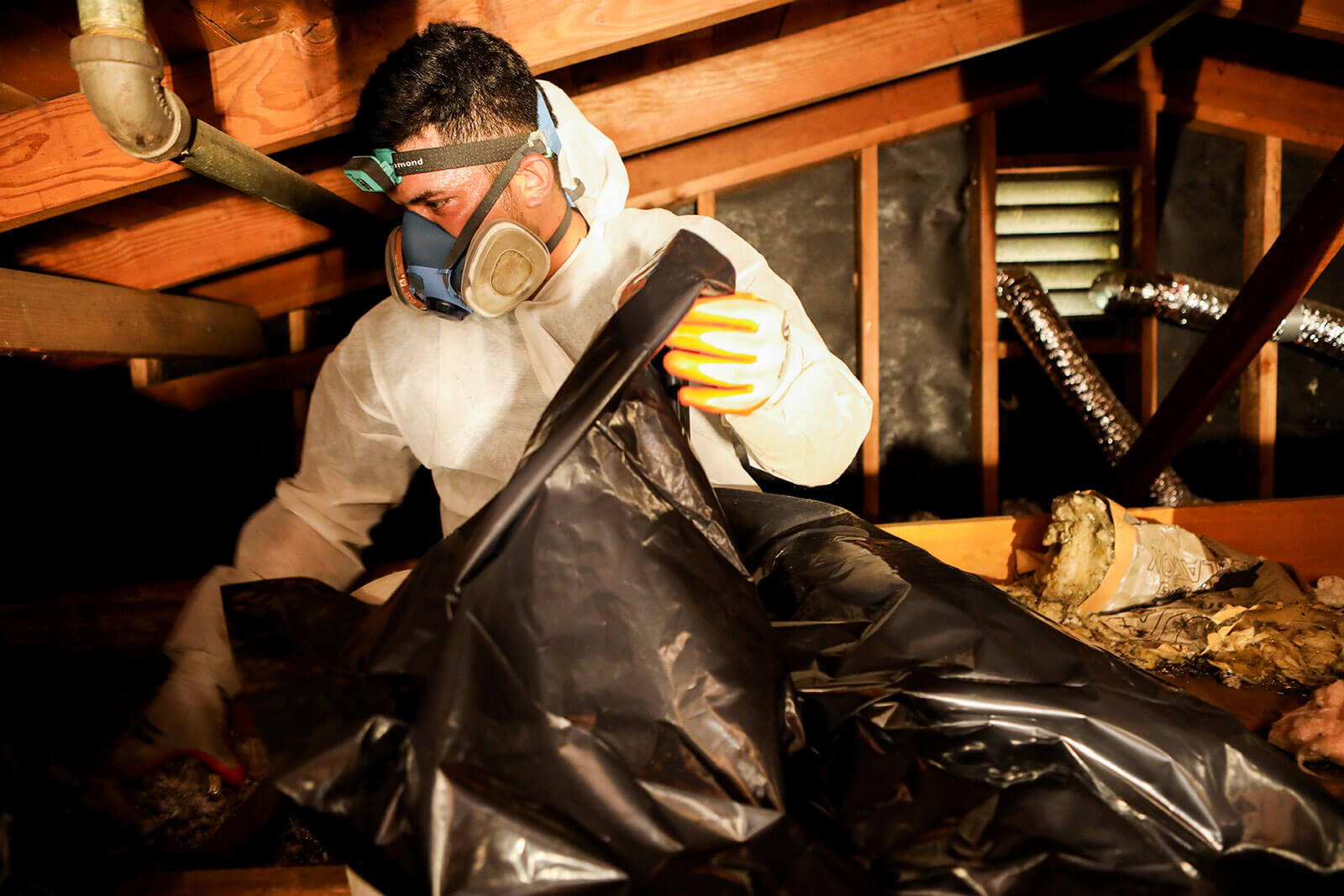
Understanding Rodent Exclusion: What It Is and Why It’s Essential
Rodent problems are more than a nuisance—they can lead to serious structural damage, health hazards, and expensive repair bills. While many homeowners are familiar with extermination or trapping, there’s another, more preventative approach that tackles the issue at its root: rodent exclusion. But what is rodent exclusion, and how does it differ from traditional methods like extermination?
In this blog post, we’ll break down the meaning of rodent exclusion, why it’s essential for long-term rodent control, and how professional services like Rodent Control Inc. can help secure your home using proven strategies. If you’re tired of recurring infestations and want a sustainable solution, this guide is for you.
What Is Rodent Exclusion?
Rodent exclusion is the process of sealing off all current and potential rodent entry points in a structure to prevent rats and mice from getting inside. Unlike extermination, which addresses the immediate problem of rodents already present, exclusion focuses on long-term rodent infestation prevention by physically keeping rodents out.
The rodent exclusion meaning lies in the term itself—excluding or blocking rodents from entering the property altogether. It involves inspecting the entire structure, identifying access points, and reinforcing weak areas with materials rodents can’t chew through.
Rodent Exclusion vs. Extermination: What’s the Difference?
It’s easy to confuse rodent exclusion with rodent extermination, but the two serve different purposes. Extermination typically involves poison, traps, or repellents to kill or drive rodents away. While it may provide immediate relief, it doesn’t prevent future infestations.
On the other hand, rodent exclusion services are proactive. They’re not about killing rodents but preventing their entry altogether. Think of extermination as a short-term fix, while exclusion is a long-term rodent control solution that targets the root cause—access.
If you’re constantly calling pest control every few months, it’s a sign that extermination alone isn’t enough. Pairing it with a comprehensive exclusion strategy is key to rodent damage prevention and maintaining a rodent-proof home.
Common Rodent Entry Points in California Homes
California’s temperate climate and abundant urban and suburban landscapes make it an ideal environment for rodents. Rats and mice are agile, persistent, and capable of squeezing through holes as small as a quarter-inch. Some of the most common rodent entry points include:
- Gaps around utility pipes and electrical wiring
- Broken or missing crawl space vents
- Roof and attic vents with torn screens
- Cracks in the foundation or siding
- Spaces under doors or poorly sealed garage doors
- Chimneys and roof lines
These access points may seem minor, but to a rodent, they’re a welcome mat. Attic rodent exclusion is especially crucial in two-story homes where roof access is common.
Rodent Proofing: How to Keep Rodents Out for Good
A thorough rodent proofing strategy involves more than just plugging holes with steel wool. True exclusion requires a professional inspection to find all vulnerabilities and the use of durable materials like galvanized steel mesh, caulking, metal flashing, and weather-resistant sealants.
Some effective rodent prevention methods include:
- Sealing all cracks and openings larger than ¼ inch
- Installing door sweeps and weather stripping
- Screening vents and chimneys with heavy-duty mesh
- Repairing damaged roofing tiles or soffits
- Securing garbage bins and removing outdoor food sources
These steps create a rodent barrier installation that rodents cannot chew through or bypass, even with repeated attempts. Done correctly, exclusion ensures you won’t face the same rodent problems again.
The Cost of Rodent Exclusion: What to Expect
Homeowners often ask about the rodent exclusion cost, and while pricing varies based on home size, infestation severity, and structural complexity, it’s an investment that pays off. The average cost for professional rodent exclusion services can range from a few hundred to a few thousand dollars.
Here’s why it’s worth it:
- Prevention is cheaper than repair: Rodents can chew through wiring, insulation, and drywall, leading to thousands of dollars in damage.
- Health risks are reduced: Rodents carry diseases like hantavirus and salmonella.
- Less need for repeat pest control visits: A one-time exclusion service may eliminate the need for recurring extermination.
Think of exclusion as a one-time, long-term solution, compared to ongoing extermination treatments that only treat symptoms.
Why Professional Rodent Exclusion Services Are More Effective
While some homeowners attempt DIY exclusion, it’s easy to miss critical access points. Rodents are expert hiders and can find entryways in places most people wouldn’t think to look. That’s why hiring a professional rodent exclusion specialist is so important.
At Rodent Control Inc., trained technicians conduct a detailed property inspection—roof to crawl space—and identify even the most hidden entry points. From there, we implement high-quality sealing and rodent proofing measures that are durable, humane, and compliant with California pest control regulations.
We don’t just patch holes; we ensure your home is completely rodent-resistant using techniques that hold up against time and weather.
Rodent Exclusion in Attics and Crawl Spaces
Your attic and crawl space are among the most vulnerable areas of your home when it comes to rodent invasions. These areas provide warmth, shelter, and access to insulation—ideal nesting environments for rats and mice.
Attic rodent exclusion often involves:
- Sealing around roof joints and soffits
- Installing rodent-proof ventilation covers
- Replacing contaminated insulation with pest-resistant materials
For crawl spaces, exclusion may require:
- Installing vapor barriers
- Sealing vents and wall openings
- Repairing moisture issues that attract rodents
Without proper exclusion in these areas, rodents can easily establish nests, reproduce, and cause extensive hidden damage.
The Importance of Rodent Control in California
In California, rodent control isn’t just a convenience—it’s a necessity. Mild winters, dense urban developments, and a high number of older homes make the state a hotspot for rodent problems.
Whether you live in Los Angeles, Orange County, San Diego, or the Bay Area, rodent control in California requires an exclusion-first approach. Poison baiting alone is not enough. Not only is it environmentally risky, but it also leaves you vulnerable to reinfestation.
With stricter environmental laws and public health concerns, rodent exclusion services are becoming the preferred solution across California neighborhoods.
Exclude Rats and Mice: Your First Line of Defense
The best way to fight a rodent infestation is to exclude rats and mice before they enter. Once inside, these pests can multiply rapidly, damage insulation, spread bacteria, and trigger allergies or asthma—especially in children and pets.
Exclusion is a critical first line of defense that blocks rodents at the source, before they become a costly and dangerous indoor problem. With proper sealing, maintenance, and monitoring, you can enjoy a home that’s rodent-free for years to come.
Conclusion: Make Your Home Rodent-Proof with Rodent Control Inc.
Rodent exclusion is more than just plugging a few holes—it’s a comprehensive, long-term solution to a recurring and costly problem. While extermination may eliminate visible rodents temporarily, only exclusion stops them from coming back. By identifying and sealing entry points, protecting attics and crawl spaces, and using professional-grade materials, you can achieve lasting peace of mind.
If you’re tired of dealing with rodents in your home or business and want a proven solution that works, it’s time to call the experts. At Rodent Control Inc., we specialize in professional rodent exclusion, helping California residents protect their properties with effective, humane, and affordable services.
Don’t wait until the damage is done—protect your home today with Rodent Control Inc.
